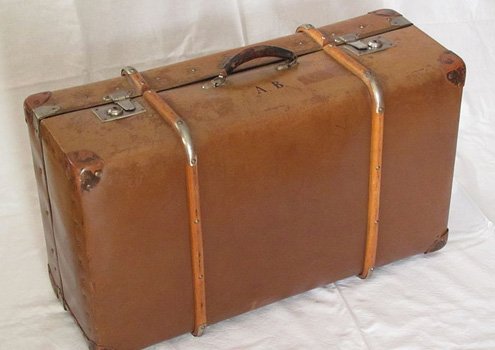Reading time: Less than 1 minute
Increase your vocabulary and you’ll make your writing much more precise. That’s why I provide a word of the week. Today’s word: portmanteau…
When I recently read the word portmanteau, I mistakenly thought of a porte cochère. The latter term refers to a covered entrance large enough for vehicles to pass through, typically opening into a courtyard.
No wonder the sentence in Susan Orlean’s very fine non-fiction The Library Book made little sense to me. Here is how she used the word:
The History Department is a bit of a portmanteau; it encompasses all of the library’s history materials, as well as the very popular Genealogy Department, and the library’s map collection, one of the five largest in the United States.
I was puzzled enough that I stopped to look up the word in the dictionary. There, I learned that it referred to a large trunk or suitcase, typically made of stiff leather and opening into two equal parts. (See photo at the top of this post.)
But here’s the interesting point about the etymology of the word. The original term dates back to the 1580s, and comes from the Middle French portemanteau meaning “traveling bag.” It comes from from porte, imperative of porter “to carry” and manteau, meaning “cloak”.
But the word took on a larger, more metaphorical meaning in 1882, when “Lewis Carroll” used it to describe the sort of words he invented for his poem “Jabberwocky,” on notion of “two meanings packed up into one word.”
An earlier version of this post first appeared on my blog on Feb. 6/19.


